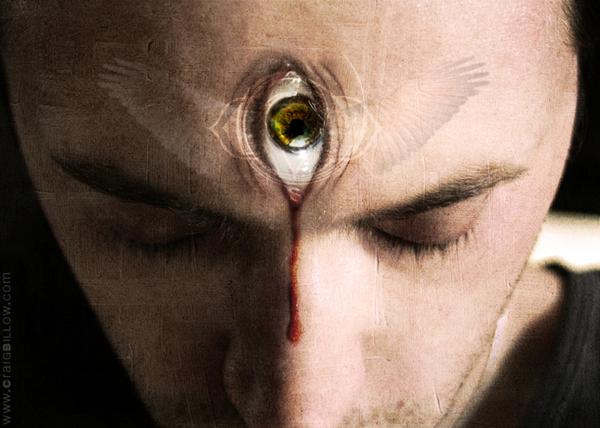
Every once in a while I get into a D.I.Y. kinda mood and start researching new ways to do my work. I've always had an interest in finding a way to work in the infrared spectrum, but I didn't have the $100 or so to drop on a good infrared filter for my camera. Chances are, most of us aren't willing to shell out that much just to 'try it out'.
After browsing around online, I came across lots of discussion on this topic. And a few people pointed something interesting out... both exposed film and floppy disk film filter out infrared light. Problem was, most of these instructions were for point-and-shoot models or they were a hack job that just looked ugly. I needed something larger that would fit my lens and nicer looking. Now, I know their results worked to a degree, but who would take you seriously if they saw you shooting with duct tape and cardboard stuck to the front of your lens? I wanted to take it a step further and really come up with something that was both functional AND could pass for a
Hoya R72 at first glance. So here's what I came up with...
1. Get a plain old UV filter for your lens. I had a spare 58mm Calumet filter for my kit lens, so that's what I worked with. They retail for about $13 so I wasn't too worried about breaking it if my hand slipped. Besides, these are a dime a dozen on
craigslist.
2. Get a roll of 120 color negative film. I used Fuji
Reala 100. Other instructions call for any exposed film, but 35mm (a) has sprocket holes and (b) isn't wide enough to cover an SLR lens. Stick with the 120.
 You want an entire roll that's been exposed, so much to the photo clerk's surprise, I tore open the pack, peeled off the backing, and held the film up to the store window for about 30 seconds to be sure the film was overexposed. Make sure to tell the person developing your film that yes, you know it will all be black, and yes, that's what you intended. Otherwise you might risk them throwing the roll out thinking it was defective. Also, if they ask if you want your film cut, say no. Most processing places will happily sleeve your entire roll uncut. This will be helpful later...
You want an entire roll that's been exposed, so much to the photo clerk's surprise, I tore open the pack, peeled off the backing, and held the film up to the store window for about 30 seconds to be sure the film was overexposed. Make sure to tell the person developing your film that yes, you know it will all be black, and yes, that's what you intended. Otherwise you might risk them throwing the roll out thinking it was defective. Also, if they ask if you want your film cut, say no. Most processing places will happily sleeve your entire roll uncut. This will be helpful later...

3. Disassemble the filter. Depending on your brand, there will be a retaining ring in the front or back of your filter that holds the glass in place. Some are screw-off and some are tension coils. Mine is a tension coil but either one works fine. Remove the retaining ring and carefully remove the glass with a lens cloth to protect your hands and to keep the glass smudge-free.
4. Use the glass as a template. Unroll your exposed film (still in the plastic sleeve) and use a sharpie to trace around the edge. You want to trace at least two, preferably three, circles onto your sleeved film. Once you've traced three circles, carefully cut each one out so you end up with several identical discs of film.

-This is where experimentation comes in...-
Some say that two pieces of film is enough to filter your light and get that groovy IR effect. After trying this out myself, I found that I was still getting a little too much residual light for my taste. So I opted for a third layer to darken things down even further and allow only IR light to pass. If you find that two layers work for you, keep it. If it works, it works. If you don't mind a longer exposure however, do what I did and go for three layers.
5. Replace the glass in your filter ring and sandwich your cut discs of film on the rear side of the filter assembly. Do this carefully and keep the cut discs of film in the plastic sleeve until you place them to avoid fingerprints. Just be sure not to leave the sleeve material in the filter assembly or you'll end up having to remove it later and that's just a pain. Once your discs are in place, put the retaining ring back (carefully) and make sure your pieces of film are held down.
And you're done!
When complete, your filter should look like the one at the top of this article. Looking through the filter, you shouldn't see any light. That's a good thing because your camera will. Now screw your new filter to your lens and go take some pictures. Remember, your exposure times will be LONG. And since this is D.I.Y. and not an exact science, your results will be slightly different than others. Just experiment with your camera's settings and find what works best for you.
ENJOY!
-c









